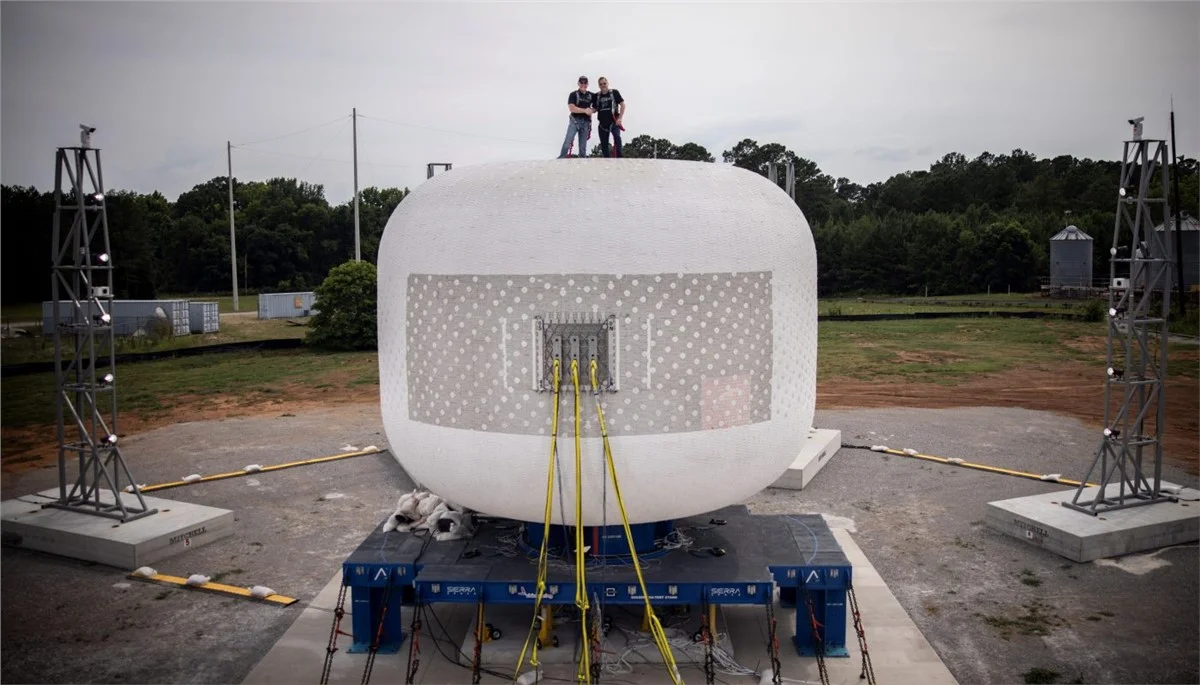
Sierra Space, a leader in commercial space technology and defense innovation, has reached a critical milestone in advancing its LIFE® 10 commercial space station technology. The company recently completed its sixth successful stress test and the fourth Ultimate Burst Pressure (UBP) test for the LIFE platform—short for Large Integrated Flexible Environment. These tests, crucial for certifying the structure for human habitation, have demonstrated the resilience and safety of the expandable habitat.
The final UBP test, conducted on October 29th at NASA’s Marshall Space Flight Center, achieved a record-breaking pressure of 255 psi. This pressure far exceeded NASA’s Factor of Safety (FOS) recommendations for restraint layer capabilities across all operational environments. The LIFE 10 module’s remarkable performance solidifies Sierra Space’s leadership in developing safe and reliable commercial space station technology.
As a scaled-down version of the LIFE® 285 habitat, the LIFE 10 module features an internal volume comparable to a 10-foot-long moving truck, making it well-suited for lunar surface missions. Its exceptional safety margins underscore its adaptability across different space environments.
- In Low Earth Orbit (LEO): The module’s internal pressure mimics Earth’s atmospheric pressure (15.2 psi), delivering a factor of safety greater than 16x.
- In lunar environments: With a lower operational pressure of 10.8 psi, the restraint layer achieves an impressive 23x factor of safety.
With these achievements, Sierra Space is concluding the UBP testing phase for the LIFE 10, further cementing its readiness for future human spaceflight applications.
The LIFE 10 habitat is part of Sierra Space’s broader LIFE 285 platform, which inflates to the size of a three-story apartment building in orbit. The company has also conducted two UBP tests on full-scale LIFE 285 modules, with one featured in the PBS NOVA series Building Stuff, premiering November 20th.
“Our mission is to ensure there’s no gap in LEO capabilities when the International Space Station is retired,” said Sierra Space CEO Tom Vice. “We’re pioneering expandable habitats to create the world’s first integrated business and technology platform in orbit, tackling humanity’s toughest challenges.”
Shawn Buckley, VP of Destinations & In-Space Infrastructure, added, “The scalable LIFE architecture supports missions in LEO, deep space, the lunar surface, and beyond. At Sierra Space, we’re redefining what’s possible in inflatable habitat technology to meet the needs of tomorrow’s space exploration.”
With its cutting-edge advancements, Sierra Space is shaping the future of sustainable space infrastructure and expanding humanity’s reach across the cosmos.

